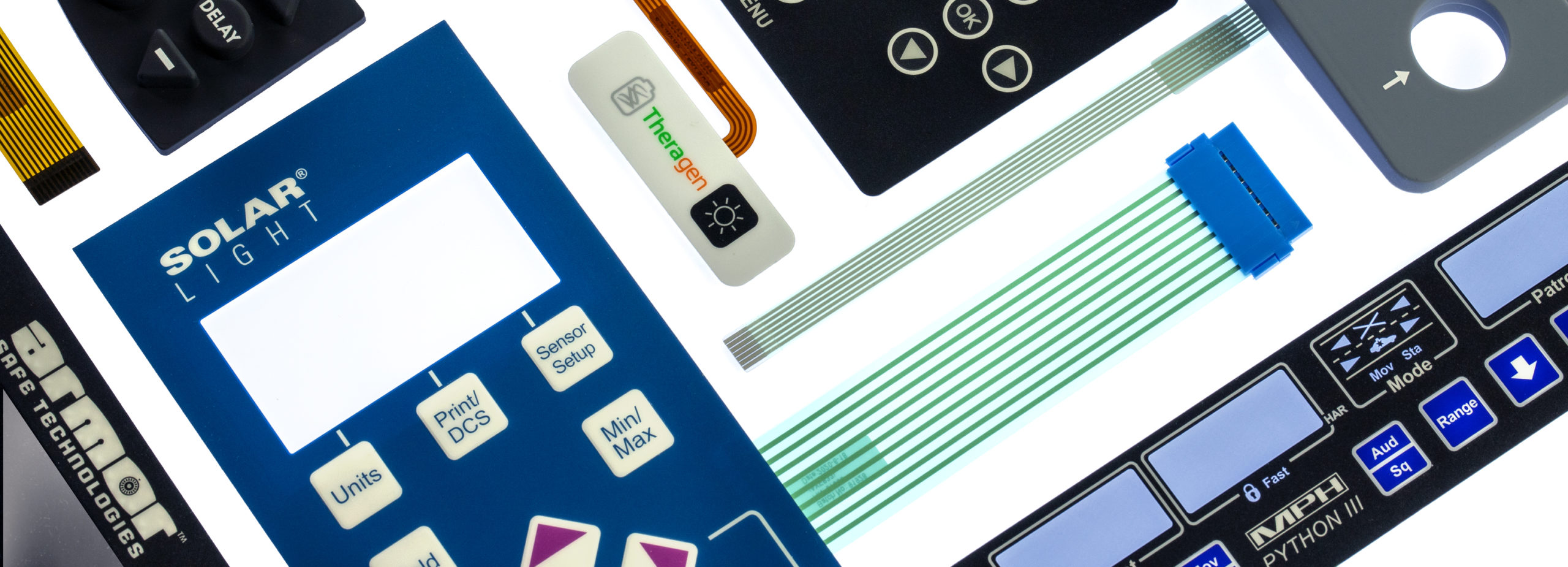Why Membrane Switches are Ideal for Durability and Performance
Recognizing Membrane Layer Changes: The Trick to Trusted and durable Controls

What Are Membrane Layer Buttons?
Membrane buttons are a sophisticated remedy in the world of individual interface technology, combining functionality and design seamlessly. These tools serve as an interface between individuals and digital systems, incorporating numerous parts right into a portable format. Typically created from versatile, slim layers of products, membrane layer buttons are made to react to touch, enabling individuals to communicate with equipment and electronic gadgets properly.
The primary components of a membrane switch consist of a published circuit layer, visuals overlay, and a spacer layer that stops unexpected activation. The graphic overlay can be customized to mirror brand identification or individual choices, improving appearances while ensuring use. Membrane layer switches are typically utilized in numerous applications, consisting of medical devices, customer electronic devices, and industrial equipment, owing to their durability and resistance to ecological aspects such as wetness and dust.
Among the crucial benefits of membrane layer switches is their capacity to stand up to deterioration, making them perfect for high-traffic environments. In addition, they are lightweight and require marginal space, allowing for ingenious designs in item advancement. Overall, membrane layer switches stand for a useful and reliable option for modern electronic user interfaces, marrying modern technology with user-centric style concepts.
Exactly How Membrane Layer Changes Job
The operation of membrane layer switches depend upon a simple yet efficient mechanism that equates customer input into digital signals. These buttons include numerous layers, usually consisting of a graphic overlay, a spacer layer, and a circuit layer. When a customer presses the switch, the leading layer deforms, allowing a conductive component in the circuit layer to make call with an equivalent conductive pad on the bottom of the graphic overlay. This call shuts the circuit and sends out a digital signal to the gadget, indicating that the button has actually been turned on.
The style of membrane layer switches can vary, however they usually incorporate domes or tactile aspects to supply responses to the user, enhancing the total experience - membrane switch. The materials utilized in membrane layer buttons, such as polyester or polycarbonate, add to their resilience and resistance to environmental aspects, consisting of wetness and dirt. In addition, the published circuits are commonly enveloped, which shields them from wear and tear over time.
Advantages of Membrane Layer Buttons

Additionally, membrane layer switches are understood for their resilience. Created from durable materials, they are resistant to dust, wetness, and physical wear, which substantially extends their lifespan compared to conventional mechanical switches. This sturdiness makes them particularly suitable for high-traffic atmospheres and applications calling for durability.
Another significant advantage is the simplicity of cleansing and maintenance. The smooth surface area of membrane layer switches over lessens dirt build-up and is typically unsusceptible spills, making them ideal for settings that need constant sanitization.
In addition, membrane buttons offer a streamlined profile, causing a thinner design that can be integrated right into different gadgets without adding bulk. This attribute not only improves the aesthetic allure yet likewise adds to a more ergonomic item style.
Applications of Membrane Switches
Functional and easy to use, membrane layer switches find applications throughout a large range of sectors, consisting of medical tools, consumer electronics, and commercial devices. In the medical area, next these switches are indispensable to tools such as diagnostic devices, client tracking systems, and mixture pumps, where integrity and ease of cleansing are essential. Their capability to maintain and endure severe settings performance makes them ideal for such applications.

In consumer electronics, membrane layer switches are made use of in products like microwaves, washing equipments, and remote controls - membrane switch. Their sleek style enables user-friendly customer interfaces, enhancing the general customer experience while offering toughness and resistance to tear and use
Commercial equipment also takes advantage of membrane layer buttons, especially in control my sources panels for equipment and automation systems. These buttons offer security versus dirt and dampness, making sure regular efficiency in tough environments. Moreover, their personalized attributes permit manufacturers to tailor them to particular operational requirements, improving performance and performance.
Picking the Right Membrane Layer Switch Over
When picking a membrane layer switch, it is crucial to take into consideration numerous variables that affect efficiency and suitability for particular applications. The key factors to consider consist of ecological conditions, tactile feedback, sturdiness, and design specs.
First, evaluate the operating environment; site web switches revealed to wetness, chemicals, or extreme temperatures need certain materials to ensure long life and capability. Next, evaluate the demand for responsive responses. Depending upon user communication, some applications may take advantage of a responsive action to confirm activation, while others may prefer a non-tactile layout for aesthetic reasons.
Durability is one more vital element; membrane layer switches need to be created to endure constant use, influences, and abrasion. Make certain the chosen button can withstand the expected lifecycle, especially in high-usage circumstances.

Conclusion
In verdict, membrane changes offer as important components in the layout of durable and trustworthy control systems throughout various markets. The adaptability of membrane layer switches allows for tailored options that fulfill specific operational requirements, strengthening their relevance in modern-day technology.
Membrane switches represent an essential facet of modern interface design, blending performance with durability in numerous applications.Membrane layer buttons are an innovative solution in the realm of customer interface technology, combining performance and style effortlessly. Normally created from adaptable, slim layers of materials, membrane switches are designed to react to touch, enabling customers to connect with equipment and digital tools properly.
The layout of membrane layer switches can vary, but they frequently incorporate domes or tactile aspects to provide feedback to the user, boosting the general experience.In conclusion, membrane layer changes offer as important components in the layout of reliable and sturdy control systems throughout different industries.